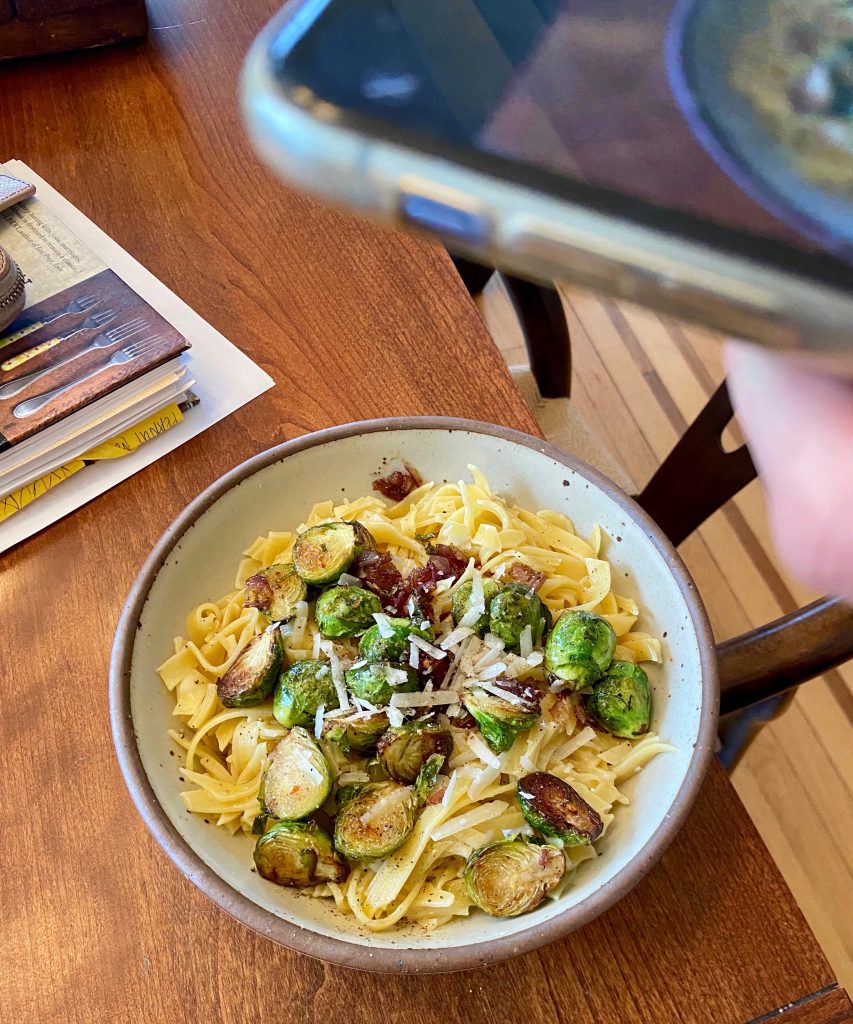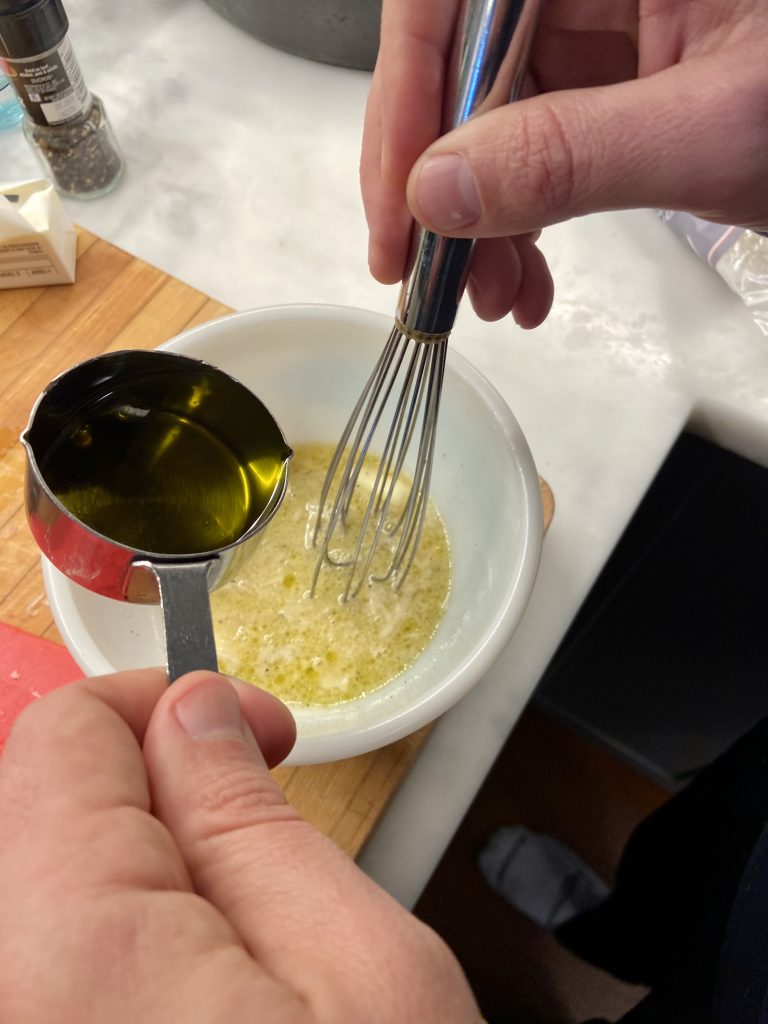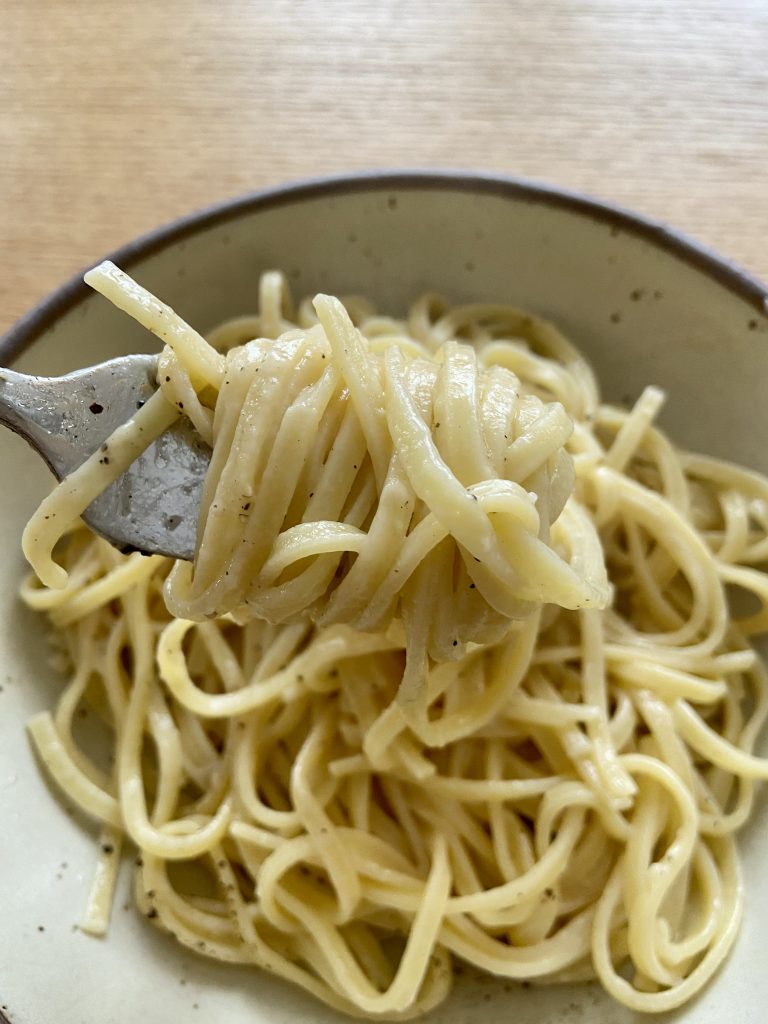Can You Cacio That?

At least one morning during the school week, some time between 11:00 and 11:30, my daughter, Abby, a 12th grader who has spent her final year of high school almost entirely in a remote classroom, comes downstairs in her flannel pajama pants, stretches, looks at whichever parent is first in her line of vision with fluttery eyelids, and says: “Cacio?”
We know now that this is short for “cacio e pepe,” the simplest, purest of Roman pasta dishes (“cheese and pepper”), and when it’s done right, it can be transcendent. Like you just can’t believe such basic ingredients add up to something so perfect. It’s unclear exactly how much Abby has learned in school in the past few months, but I sleep easy knowing she’s at least learned this basic truth in our kitchen.
I realize how absurd it is that we even entertain the request — both of her parents have their heads buried in keyboards or zoom calls, we are still riding the caffeine wave from our morning coffee, and cacio e pepe involves bowls and pots, and actual technique. There’s peanut butter! We tell her. How about that leftover chili!? Just make yourself an avocado toast? You’re out of your mind if you think we are making you cacio e pepe at 11:00 in the morning on a Tuesday. If you want cacio, you can make it.
Of course we know one of us is going to cave. The days are long, online school can be depressing, and I have a long, well-documented history of throwing food at the problem.
And it’s actually ok, because a funny thing has happened as a result of all this cacio-ing. Whenever we are making any kind of pasta (for dinner, too) someone will ask: Can you cacio that? Translation: Can you prepare the pasta like cacio e pepe, then throw in whatever else you were planning on adding? That means you can make cacio e pepe then toss in roasted butternut squash and kale; or some caramelized onions and spinach; or you can do what Abby did for herself for lunch last week: You can pan-fry Brussels sprouts (cut-side down) in olive oil over medium-low heat with some chopped onions, salt and pepper, red pepper flakes, then after they’re brown crispy on the bottom, drizzle in a little honey and add to your peppery pasta. (Of course, if you do any of this, it’s important to know that you can no longer call the final product cacio e pepe.) She was so proud of it, she took pictures, which I consider a personal triumph.

Andy and I have competing techniques for cacio e pepe — he makes the cheese and pepper sauce in a separate bowl (above) whisking in hot pasta water to emulsify, while I do everything right in the pot after draining the pasta. Abby claims my technique is too improvisational and unpredictable.

Either way: You want it to look like this. See how the pasta is coated and shiny, but not gloppy?
Subscribe to my substack to get the recipe.

The post Can You Cacio That? appeared first on Dinner: A Love Story.